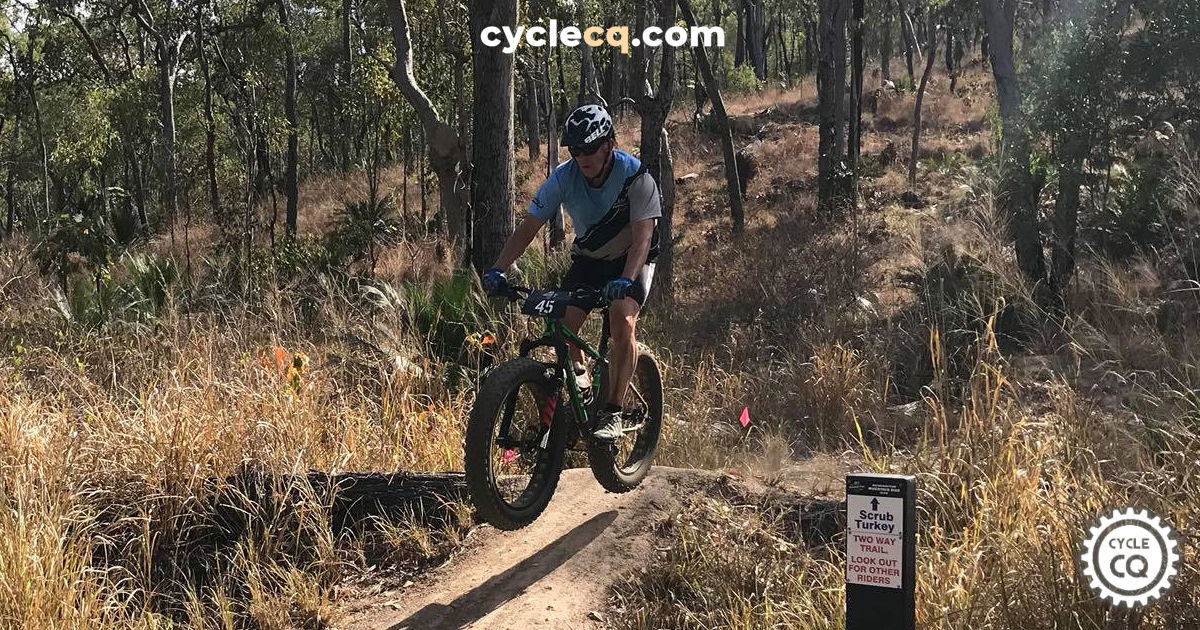If fat bikes aren't something that normally hit your radar, chances are the mere mention of them conjures images of a burly American lumberjack-type dude belting through the snow with a can of craft beer in his bottle cage.
Here in Australia's north, we don't get a lot of snow. Well, except back in 1946, when according to my late mother, half an inch fell at Eidsvold.
In our part of the world, fat bikes are mainly seen as novelty bikes for the beach, but increasingly you'll spot one on your local trails. Why?
Why would anyone choose a fat bike for XC when no Australian company actively markets them, let alone for that purpose? Indeed, you'll rarely see a fattie on the floor of your local bike shop.
The reason is simple. It happens organically. You'll ride with a group and someone will have a fat bike. They're keeping up with the pack on climbs and nailing it on the descents, the sound of those big tyres rumbling.
You hear them laughing. A lot. That's because fatties are fun. And the child inside you stirs. You want one. That's how it happened for me.
So, the purpose of this article is to unveil the mystery of fat bikes, to explain them for those of us who live here in the sometimes-drenched but usually hot and dusty climes of Central Queensland.
I'll discuss the pros and cons of riding a fat bike for XC, and if you already own one, I'll provide some tips and tweaks to make your rig perform well on any terrain.
Preconceptions
I have a big stable of bikes but none turn more heads on the trails than the fat bike. Kids and rookies love it on sight. Weight weenies, not so much.
At XC races, there are always a few 'pros' having a good laugh as the fattie rocks up on the start line resplendent with chunky enduro tyres. Responses range from friendly jibes to snarls to stay out of the way.
It doesn't phase me. Peer pressure and logic would suggest I race my carbon 29er but I rarely do. I love my fattie and I know that anyone who hates it on sight is making a judgement without having actually ridden one.
I was guilty of that myself once. I only bought the bike on impulse when the bike shop knocked a few hundred dollars off. It just looked so ridiculously different. A bit like me. I felt sorry for it. I had to give it a home.
Also fresh in my memory was how a couple of Gladstone guys on fat bikes - you know who you are - blitzed our mainstream rigs at the 3 hour XC race earlier that year. I wanted to get my head around the fat bike concept so I bit the bullet and dropped two grand on the counter. I've never looked back.
My weapon of choice is a heavily modified alloy 2016 Scott 'Big Jon' - you can't get a more lumberjack name than that.
Pre-mods, the bike weighed 14.9 kg but after, it tipped the scales at 16.9 kg. At that weight and with huge 4.8 inch wide tyres, it should be a tortoise on the climb, but that isn't the reality at all.
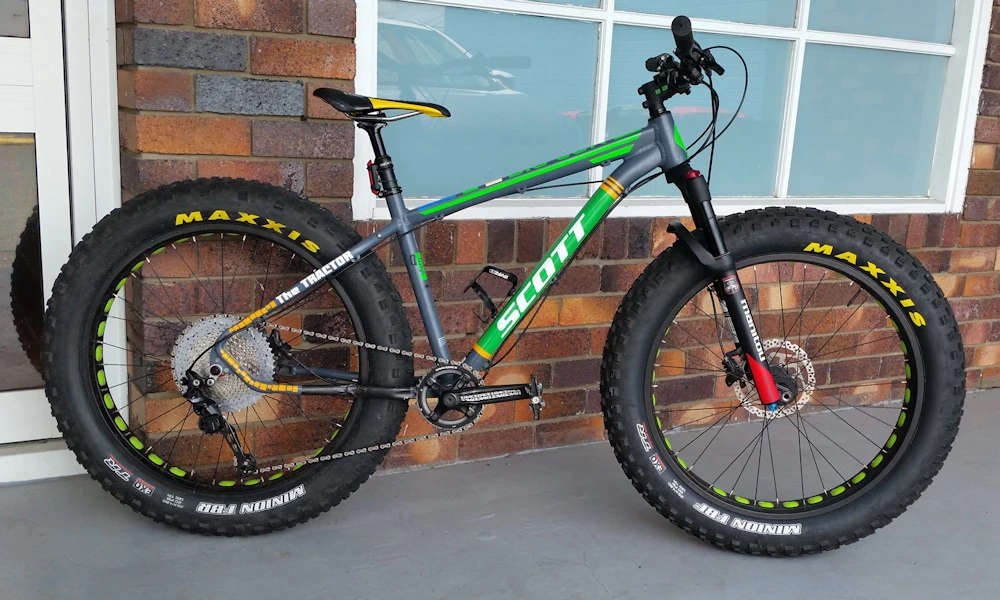
Why Fat Bikes work
Whether climbing, descending, or cornering, fat bikes seem to defy logic but there is a bit of science - and psychology - involved.
Ascending
There's a popular climb called Finley's that I ride a lot at the First Turkey MTB Reserve in Rockhampton.
It's a pretty typical XC green trail - 2.3 kms long with a 4 degree gradient and lots of switchbacks. The terrain is dry hard-pack with loose gravel on the corners and there are plenty of rock rollovers to negotiate.
It's a great climb on my carbon Giant XTC Advanced hardtail. That bike is a bit over 10 kg and has skinny tyres so I can take the best line between rocks. Oddly though, my monolithic fattie loves the ascent as well. Only 20 seconds separate the two bikes on that climb.
Let's dissect that revelation a bit.
First, the tyres. A 26 x 4.8 tyre is roughly the same diameter as a 29 x 2.2, so in effect you're riding a fat 29er. You have all the rolling advantages of a 29 inch tyre.
True, those advantages are partly negated by the heavier tyre weight, but in turn, you gain an extra advantage from not having to be so fussy about choosing the best line.
Where you might lose a few seconds due to the weight variance, you make up for it by taking straighter lines. Throw a few roots and rollovers into the equation and the fat bike is actually faster. There's no need to slow down or panic about a potential OTB - you just plough through.
Fatties also like uphill switchbacks. On tight corners, the flick turn becomes second nature. At the crest of the switchback where you'd normally slow, you pump the front while still under speed. The tyre's volume lifts the front off the ground and you flick the bike around the turn. With a bit of practice, this becomes an automatic process that saves you time and energy getting back up to speed.
Rock rollovers are another place where bouncing the front helps you clear obstacles. Yes, you can do that on a normal bike too, but on a fattie you bounce bigger - often clearing a series of obstacles - and the landing is more forgiving.
Finally, the fat bike maintains its momentum quite well. On the stretches of trail where the grade is only 1 or 2 degrees, the bike's weight is a plus, helping to carry it along with surprisingly little effort.

Descending
For XC races, the fattie has made my hardtail obsolete. After lagging a touch on the previously mentioned climb, the fattie destroys the hardtail's times - and we're talking minutes, not seconds - on the rocky ridge traverses and gnarly forest descents that inevitably follow.
While a fat bike's weight and bulk can be a disadvantage on the climb, that same weight and bulk makes it descend like a rocket. Once these rigs start rolling, they really start rolling. At least half of my fastest descents on Strava have been on the fattie. On blue enduro descents, it even matches - and sometimes beats - my duallie Scott Genius.
The wonders of gravity aside, the other advantage on descents is cornering. The Maxxis Minion FBF/FBR tyres on my fattie are based on the fabulous DHF/DHR enduro tyres but twice the width. If you've every ridden on a DHR, imagine that traction.
Add to that, you're only running 10 psi. No matter how sharp the turn or how loose the surface, I have never had the front tyre threaten to slip out from under me.
And here's where the psychology kicks in. With that much grip and gravity at your disposal, you become heroic - and I'm usually a coward on enduro trails.
On social rides, mates make fun of me because I'm fast up hills and slow going down, but on the fattie I'll descend at speeds I wouldn't dare try on my hardtail. I can't overstate the amount of confidence these bikes instil in a rider.
The saying goes that XC races are won on the climbs, not the descents. The fattie laughs at that theory. There is nothing more soul-destroying to those scoffing weight weenies than to hear that big mongrel thing hammering down the hill behind them, shredding the precious seconds they gained on the climb. When they have to pull over to let you past, you know it's game over. There's no coming back from that.
HOWEVER (in bold capital letters for effect), I'm not remotely suggesting that you should ride fat bikes on black enduro trails. No matter how much you tweak your fattie, it's not going to cope with massive impacts any more than an XC bike would.
Fat bikes are limited by fork travel, which on the Mastodon Pro is 120 mm, and I believe that's the longest travel fat bike fork around. Most are 80 to 100 mm travel. Also, on a big drop, the rounded tyre sidewalls will be prone to pinch flats if you're running tubes, or burping out all their sealant if you're set up tubeless.
Suspension, Steering & Tyre Pressure
I've clustered these three subjects together because they are inter-related. You can't get one aspect right without influencing another.
As with standard mountain bikes, fat bikes come in a variety of suspension setups - fully-rigid like the Specialized Fatboy, hardtail like the Cannondale Fat CAAD 1, or dual suspension like the Framed Montana.
Obviously, fully-rigid bikes will be the least expensive. They're targeted at the snow and sand market, which is fine. The frame however is usually the same one used on a particular brand's higher-end bikes as well. The Canyon Dude range is a good example of this and it's a practice that is typical of mountain bikes and road bikes as well.
You might decide to buy a top end bike ready to hit the trails and that's fine. I chose the fully-rigid option because I wanted a good platform with decent level components that I could upgrade later if I wanted to.
Regardless of which way you go, one simple reality is true. A rigid fork is fine for sand and the occasional fire trail, but if you want the bike to steer exactly where you point it, e.g. on single track, you will need a suspension fork.
Why? Because fat bike tyres run at low pressure. Depending on the terrain, you will usually run between 4 to 12 psi in the front, and 6 to 15 psi in the rear.
If you try to run your front tyre too high, your steering will bounce. If you try to run it too low, your tyre will squish around corners and can even roll off the rim.
Without a suspension fork, it's virtually impossible to find a balance between steering and suspension. I found this out the hard way during a race.
The Fork is Everything
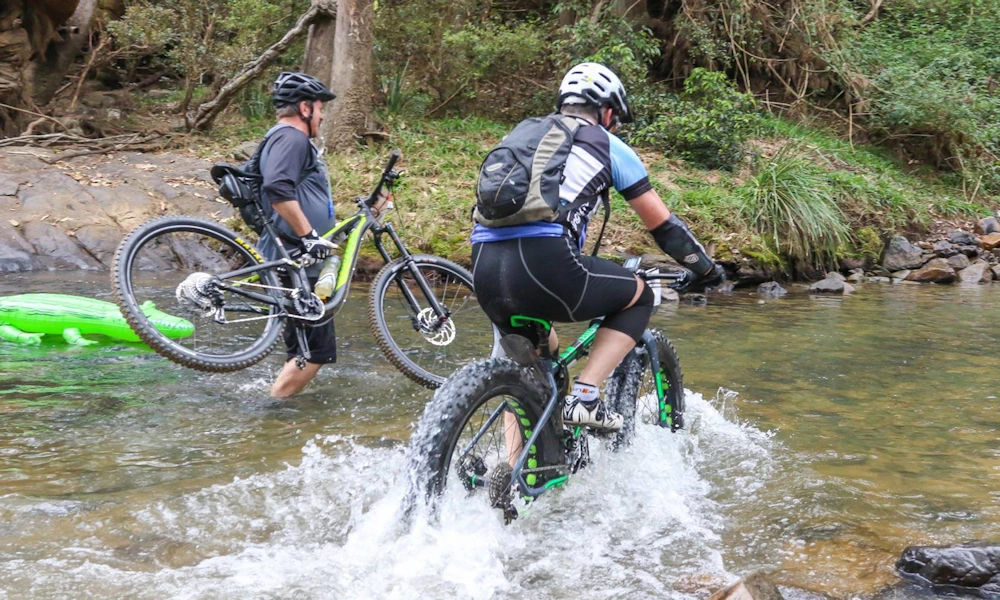
I rode my fully-rigid Scott for about a month then decided to use it in the Mackay Mountain Marathon. It was stock standard; the only mod was a dropper post. I ran 5 psi in the front and 8 psi in the back. For the most part - on climbs and straight fire roads, it performed admirably.
However, when it came to mud or downhill descents, its performance swung from riding a space hopper to steering a sponge. And downhill on bitumen with 5 psi? It was so terrifying I got off and walked. I actually walked down a paved hill!
Somehow, I still finished 86th out of 120 riders and that surprised me. It proved that the fat bike had potential but that it needed work. I realised that low tyre pressure had caused the steering and handling problems. I needed more air in the front and I could only achieve that with a suspension fork.
Fork choices were few at the time - and still are. The 32 mm stanchion RockShox Bluto seemed to have the market cornered but the internet was filled with terrible reviews. On top of that I really wanted 34 mm stanchions. I've bent my fair share of 32s.
I eventually stumbled onto an obscure review for the just-released 34 mm stanchion Manitou Mastodon. Manitou isn't a brand you hear of much nowadays but I remember it well from about 20 years ago. The Manitou forks on my old Haro hardtail were awesome, so based on sentiment alone, I purchased their latest offering.
In the intervening year or two, the Manitou Mastodon Pro has gone on to become regarded as the best fat bike fork on the market, so that worked out well. 😎
I fitted my new fork, hopeful that it would improve my slag of a bike to a reasonable extent, but I never imagined just how huge the difference would be.
That single modification changed the bike from wimp to wicked. I could now ride super-aggressive and within a single day I destroyed both Schwalbe tyres. I switched to Maxxis and that second mod turned her into a war-horse. I felt immortal.
On trail or sand, I now run 10 psi front and back. Just watch the back tyre pressure if you're doing a lot of jumps on hard-pack or riding down stairs - if it's too high, the rear can bounce up and threaten to flip you. On lumpy descents, always ride out of the seat on a fattie and keep your weight back - These things like to get airborne (which is awesome fun).
If I'm riding a lot of bitumen, I'll run 15 rear with 12 in the front, but 10 and 10 is ample.
Tyre Size
4.0 or 4.8 - is there really that big a difference? Yes.
When you increase or decrease the width of a bike tyre, the overall diameter also changes. This is because bike tyre manufacturers still use the circa-1950s cross-ply car tyre standard, which dictates that the sidewall height is (theoretically) 100% of the width. Therefore, a 4.8" wide tyre will be 1.6" taller than a 4.0" tyre.
As a general guide, a 26 x 4.0 tyre is about the same diameter as a standard 27.5 x 2.2 XC tyre, while a 26 x 4.8 is roughly the same as a 29 x 2.2.
It follows that you can make similar comparisons about the merits of each in regard to rolling over objects, cornering, and acceleration, as you can when comparing 27.5 vs 29 tyres on conventional mountain bikes. The only difference is that in the case of fat bikes, the rim size remains the same.
Also, the higher sidewall of the 4.8" tyre will mean more 'sponginess' in corners but this can be overcome by experimenting with tyre pressures.
Finally, the 4.8" will be heavier than the 4.0", which on paper should make climbing more of a chore. My personal experience however, is that the heavier weight of the 4.8" is offset by rolling over obstacles easier due to the greater rolling circumference.
Are 3.5" tyres worth a mention? No. You're half way between a plus bike and a fat bike and a 3.5" won't do either job well. Commit to one or the other, and hey, it's a great excuse to own two bikes :)
Some fat bikes run 27.5 rims. The sidewall profile (I believe) is 80% instead of 100% (based on the newer radial car tyre standard) but everything else is the same as 26ers.
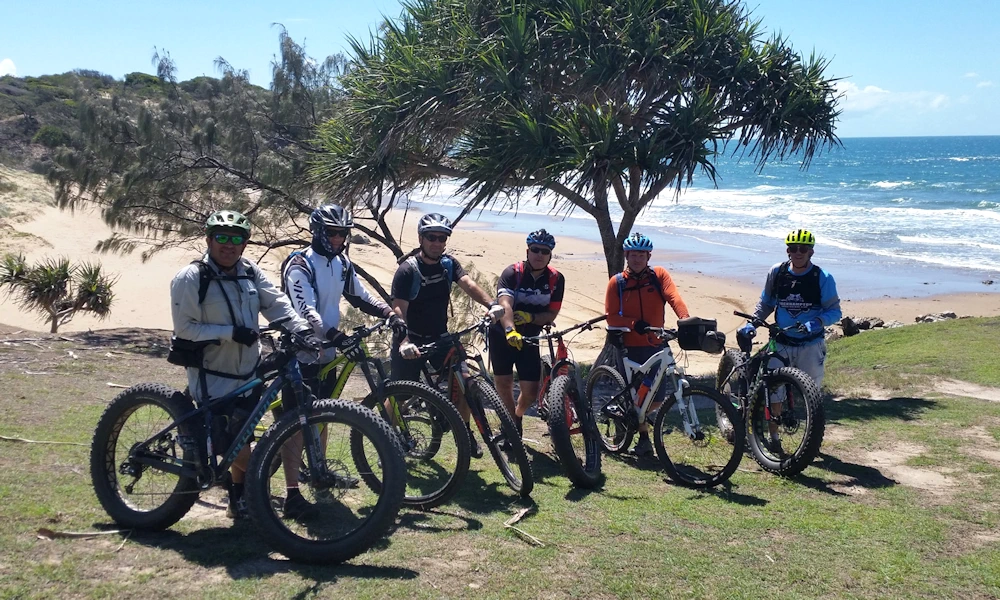
Tubeless or Tubes
I write this as a tubeless convert. I like tubeless on all my bikes, even my road bikes, because it means a lot less punctures. A tiny thorn hole goes unnoticed while the sealant does its magic as opposed to changing a tube on the side of the trail.
That said, I always carry a tube. Sealant has a habit of drying out (yes, including the Finish Line brand that claims otherwise), and a tube is just a bit of backup to save me a long walk home.
This is especially true for fat bikes. If you've ever done a tubeless conversion on a fat bike, you know it's a MASSIVELY HUGE job. You learn a few tricks on the first one, and with the right tools in your nice clean workshop - and a couple of glasses of scotch - the second one isn't so bad.
On the side of the trail though, when a half inch root has ripped through the tread, unseating your bead, and all your magic goo is laying wasted in the dirt, you'll be glad you carried a spare tube.
Even if you plug the hole, no amount of CO2 cartridges, let alone your mate's dinky little bike pump are going to re-seat that big chunk of rubber.
Go tubeless but carry a tube. When you get home, rip it out, wash it off for next time, and go tubeless again.
Tyre Options
The most common off-road tyres you'll see on fat bikes in our part of the world are the lightweight Schwalbe Jumbo Jims and the tough-as-nails Maxxis Minion FBF/FBR.
I haven't included the Maxxis Mammoth and Colossus tyres here. While they are available in Australia, they're designed for bitumen and snow, and we're talking XC.
Schwalbe Jumbo Jim
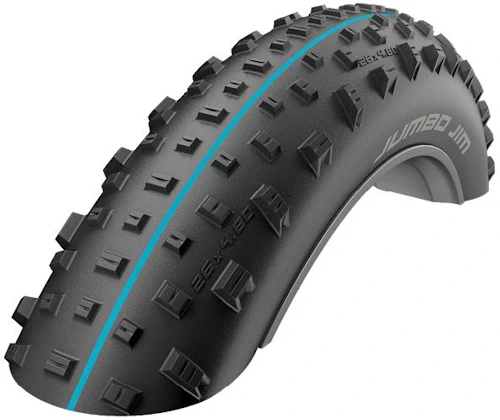
The Schwalbe Jumbo Jim comes standard on a lot of new bikes. This is because a) fat-bikes are predominantly aimed at the US market for use on sand and snow, b) they are lightweight to suit that purpose, and c) they use less material so they're cheaper to produce.
Here in the snow-less northern climes of Australia, they're fine for the beach and if you take care choosing your line, they'll hold up OK on gravel and green XC trails. Inflated to the max, they'll even go OK on bitumen.
However, when you hit a downhill XC trail on your Jumbo-clad fat bike, you'll be horrified. Unless your pressures are spot on, you'll bounce like a wallaby.
On corners, the baggy Lite Skin case flexes like marshmallow while the uninspiring open tread pattern - which would be more at home on a golf cart - will have you fearing a puncture from every rock and root on the trail. And you should fear them. Jumbo Jims puncture very easily.
Assuming you survive your first downhill charge, you'll go home and mess around with tyre pressures and suspension in an effort to correct the terrible handling, but all your tweaks will make little difference.
There's nothing wrong with your bike - it's just the tyres. Take them off, dissolve them in acid, and bury their remnants in a hole so you never have to see them again.
Maxxis Minion FBF & FBR
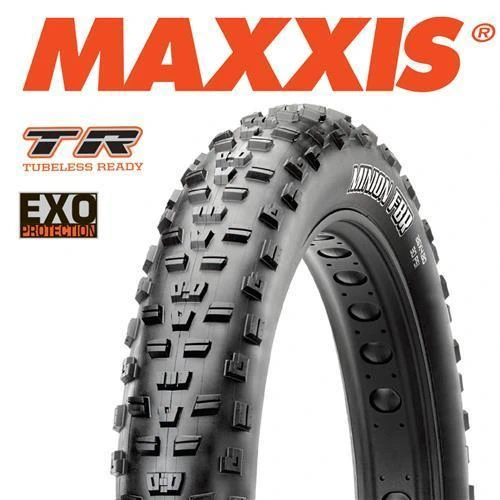
At this point, I'll declare my bias towards the Maxxis Minion FBF and FBR. They are basically fat versions of the excellent Maxxis Minion DHF and DHR enduro tyre, which I also totally love. With a 120 TPI case and Kevlar protection, they flex well on impact but are tough-as-nails.
Due to the stronger case and more aggressive tread design, the Maxxis is significantly heavier than the Schwalbe, but their traction and reliability are worth every gram.
They are just as much at home on sand and hard-pack, and they particularly excel over gravel, dust, rocks, and roots.
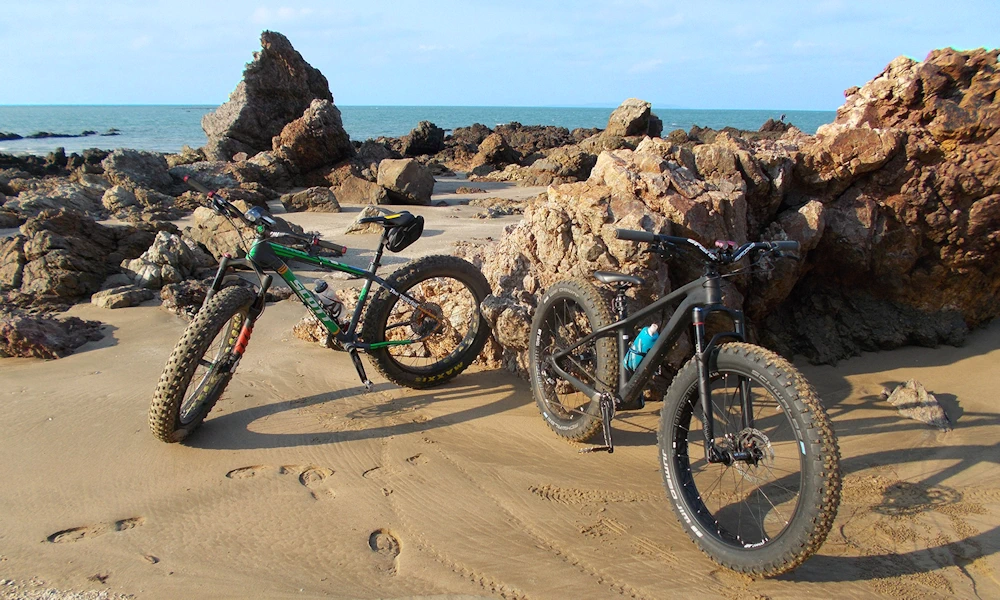
Buying a Fat Bike - good vs bad
As with standard mountain bikes, fat bikes range from the cheap recreational bike variety through to top-end carbon machines with all the bells and whistles.
With fat bikes though, the low-end stuff is particularly terrible even on smooth pathways. Here are some tell-tale signs of a cheapie. If you intend to go off-road, avoid these at all cost.
- nut and bolt axles as opposed to quick release;
- straight steerer tubes as opposed to tapered;
- mechanical (cable) disk brakes instead of hydraulic;
- 'Shimano' brand components without a model name e.g. Deore, SLX, XT etc;
- skinny handle bars;
- grip shift gear controllers;
- triple chain-ring front derailleur (some quality bikes still run 2x setups);
- rear cassettes with 6, 7, 8, or 9 rings.
- coil front suspension instead of air/air and coil;
- street tyre tread pattern;
- cost less than $1500 AUD.
So, what constitutes a good bike then? Quality. A trail-worthy fat bike will have good components from a reputable brand.
In the section below, I'm going to focus on two bikes, the Scott and the Canyon, simply because they're the ones I've had most exposure to.
However, before I do, I'll list a few other bikes that are worthy of a mention. I've filtered out the rubbish by applying two prerequisites for inclusion.
- components must be at least mid range spec, i.e. Shimano SLX or SRAM NX;
- brakes must be hydraulic, not mechanical.
I've really made an effort to see which brands actually carry stock in Australia but it seems to change on a weekly basis so in most cases I've linked to the manufacturer's website so you can do your own research.
Cannondale Fat Caad - three models, some with lefty fork - alloy frame - mid spec;
Norco Bigfoot - alloy frame - rigid fork - mid spec - hydraulic brakes on Bigfoot 1;
Pivot Les Fat - carbon frame - rigid or Manitou - Maxxis tyres;
Salsa Beargrease - carbon frame - rigid fork - X01 spec - 27.5 rims;
Salsa Mukluk - carbon frame - rigid fork - GX Eagle spec - Maxxis tyres;
Specialized Fatboy - three models, wouldn't touch the low spec one;
Trek Farley - three models in both alloy and carbon, spec mid range to good.
Scott Big Jon
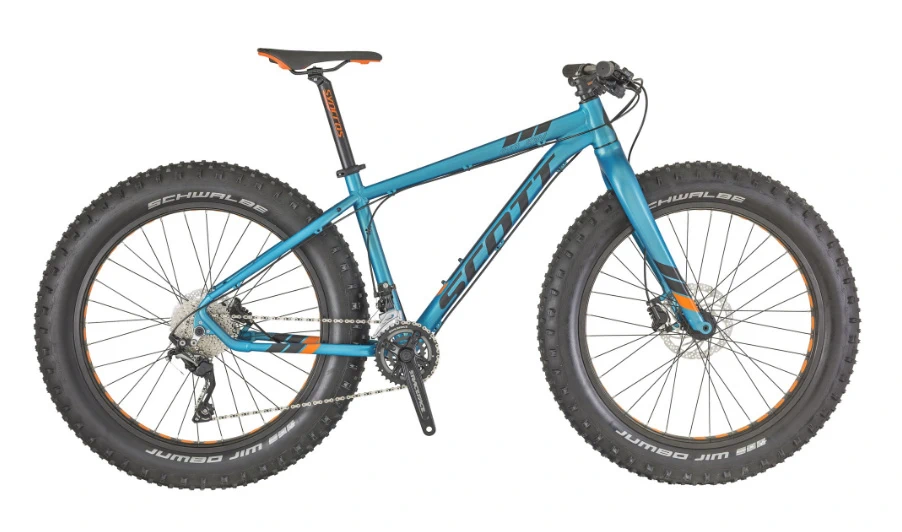
I love my Scott fat bike but I would definitely look around before buying a new one. While other brands have made advances in regard to weight reduction, Scott haven't made any spec changes to the Big Jon since 2015, which remains only available in alloy.
In fact, they've even dropped their Bluto-equipped model, the 'Big Ed' from the range.
That said, the lack of ongoing R&D is probably why the Scott Big Jon remains one of the most affordable quality fat bikes on the market. Although it's a fully-rigid bike, the alloy frame is bulletproof and the parts catalogue is very good. Shimano SLX components are standard and the Race Face crank will survive a nuclear war. It's clearly kitted for sand and snow, however this is a quality platform to upgrade for XC.
The Big Jon costs around $2000 AUD. If you want to ride it a lot on single track, add another $850 for a Manitou Mastodon fork and $200 for a dropper post.
Canyon Dude
The Canyon Dude comes in 3 specs. Like Scott, the Canyon Dude range is fitted standard with the truly awful Jumbo Jim tyres by Schwalbe.
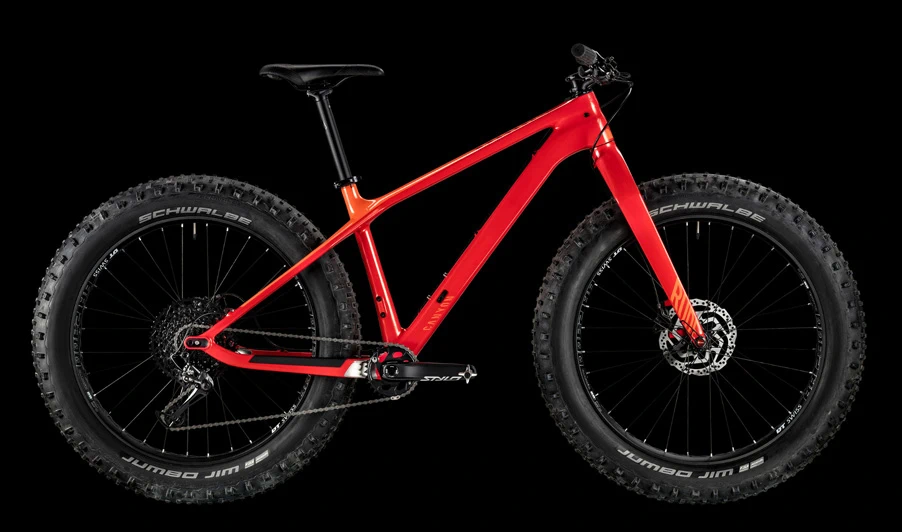
Canyon's entry-level Dude CF 8.0 is a fully-rigid fat bike with 4.8" tyres. This combination marks it as intended for sand and snow use. It features a carbon frame but the trade-off is lower spec components. Scott went the other way, with an alloy frame and higher spec components. Cost is $2650 AUD, but given the other offerings from Canyon, I wouldn't touch this model.
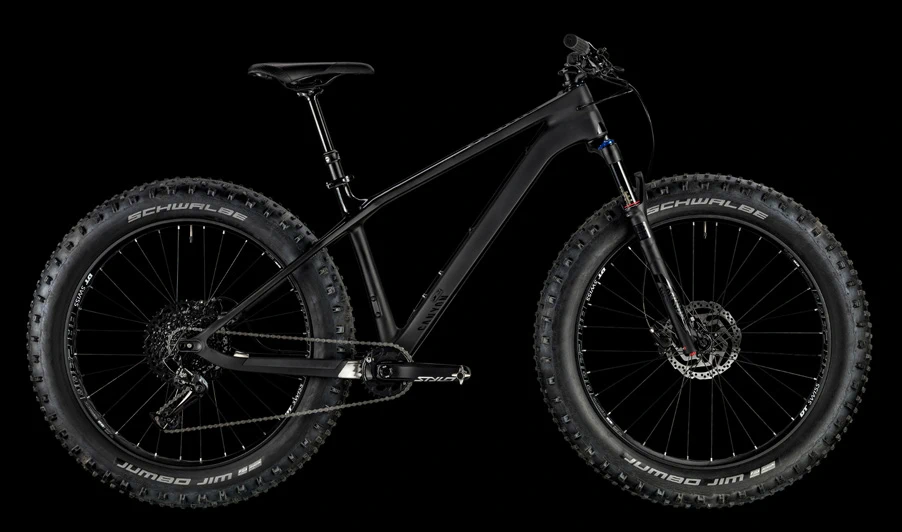
The mid-range spec is the Dude CF 8.0 Trail . It costs $3200 AUD and comes with SRAM NX components and a RockShox Bluto fork. A friend owns this model and is happy with it - at least until the Bluto died after only a few hundred kilometres.
I really can't overstate how terrible the RockShox Bluto is. If I bought this bike, I'd swap it out for a Manitou Mastodon which would add $850 to the cost.
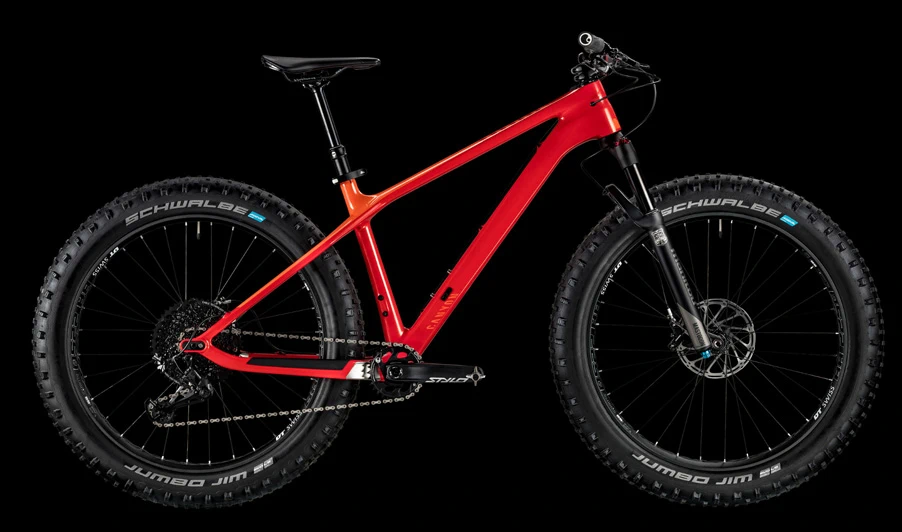
With all the above in mind, if I were going to buy a Canyon Dude, I'd definitely go the extra dollars and purchase the premium Dude CF 9.0 Trail for $4350.
The top-of-the-line Manitou Mastodon Pro comes standard. You'll also get a component upgrade to SRAM GX.
Summary
Righto, that's it. Yet again, a short article has blown out to an epic tale. I hope that you found something of value in the above read.
